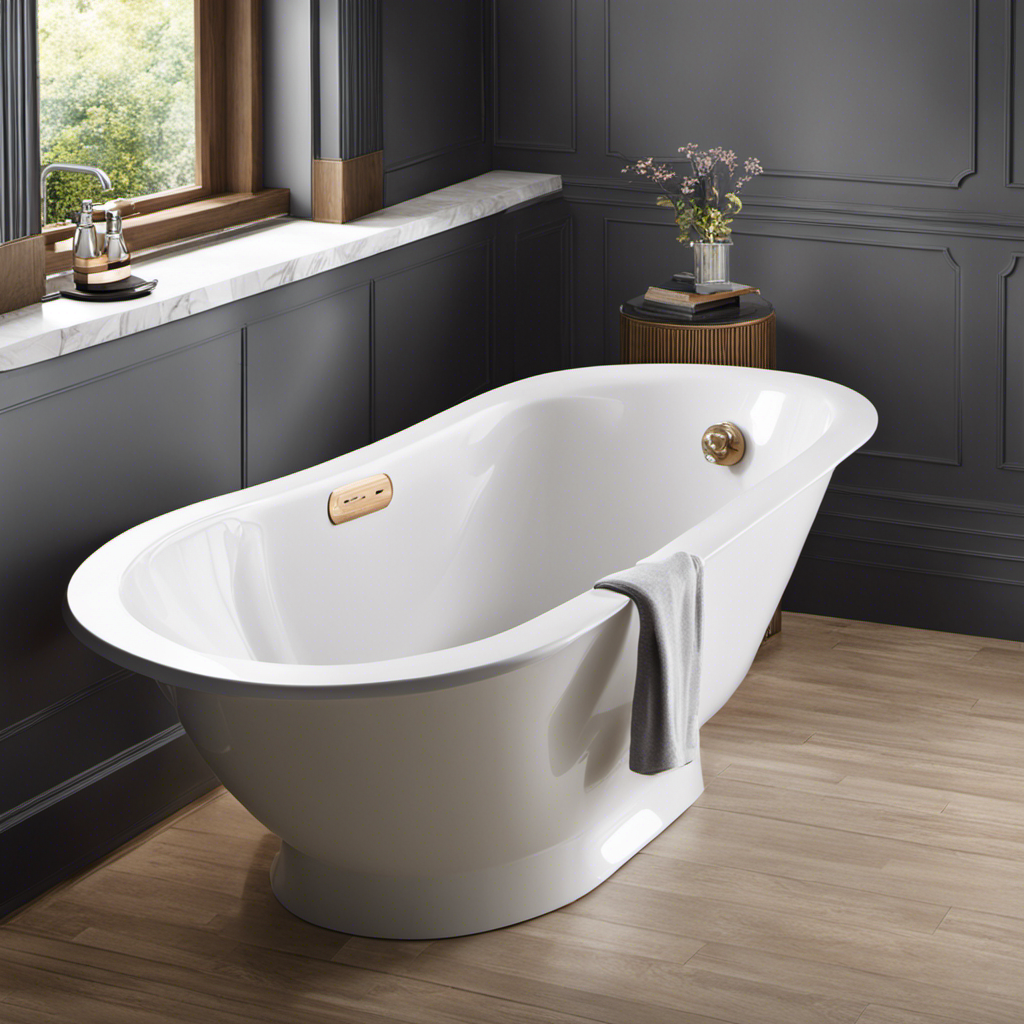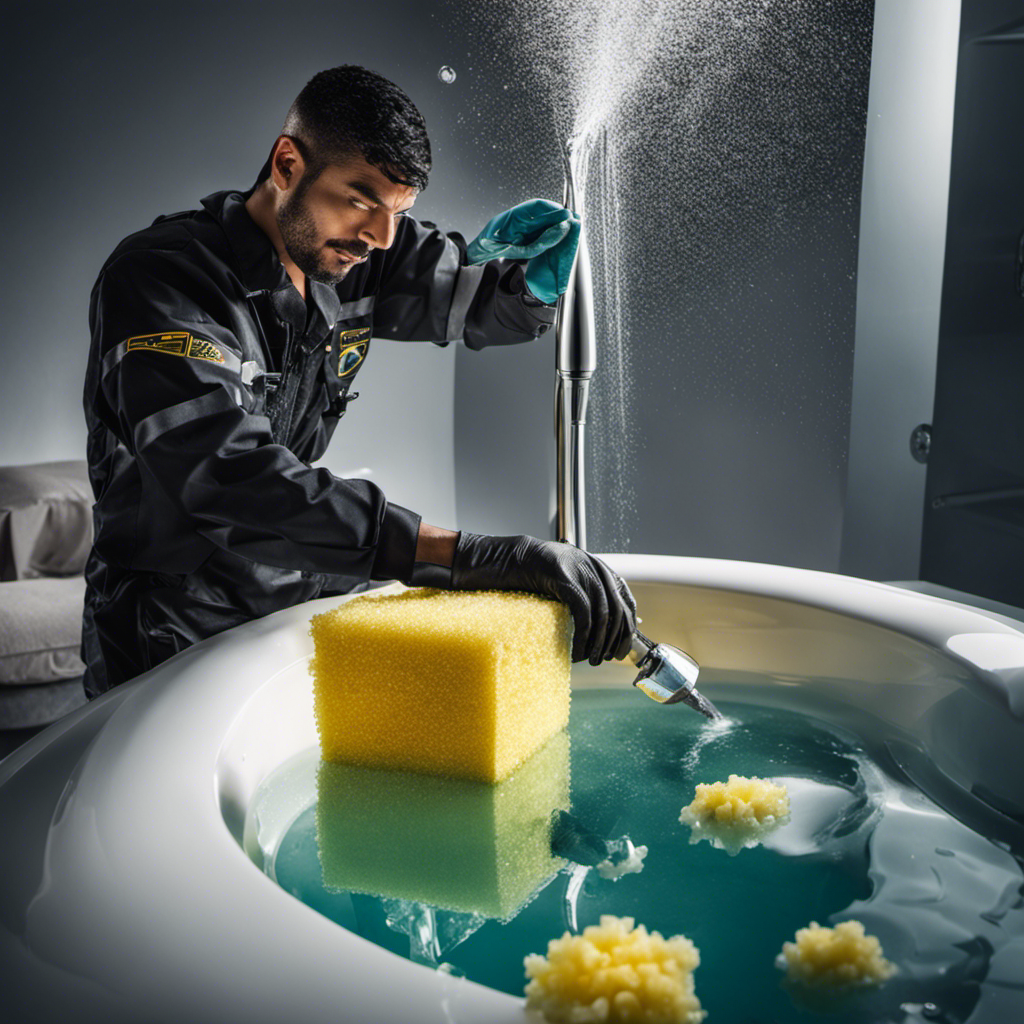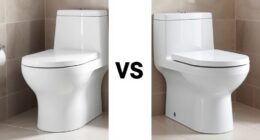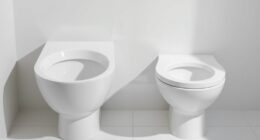I’ve had my fair share of frustrating moments dealing with a leaky bathtub faucet. The sound of steady droplets hitting the porcelain, like a persistent drummer, can drive anyone to the edge.
But have you ever wondered what causes these pesky leaks? In this article, we’ll dive into the common culprits behind a leaky bathtub faucet.
From worn-out washers to corroded valve seats, we’ll explore the technical details that contribute to this irritating problem.
So, let’s roll up our sleeves and uncover the secrets behind that incessant drip.
Key Takeaways
- Constant turning on and off of the faucet handle causes rubber washers to deteriorate, resulting in water leaking from the spout or handle.
- Mineral deposits can build up on the valve seat, causing corrosion and gaps for water to leak through.
- A faulty O-ring can cause leaks even when the faucet is turned off, and over time, O-rings can wear out or become damaged.
- Loose or damaged faucet handles can interfere with the faucet’s ability to shut off water flow, and high water pressure can strain the faucet and lead to leaks.
Common Causes of a Leaky Bathtub Faucet
One of the most common causes of a leaky bathtub faucet is worn-out washers. Over time, the constant turning on and off of the faucet handle can cause the rubber washers inside to deteriorate and lose their effectiveness. When this happens, water can start to leak out from the spout or the handle of the faucet, resulting in a constant drip.
Not only is this annoying, but it can also lead to significant water waste. Dripping water waste is a serious issue, as it can contribute to increased water bills and have negative environmental consequences.
Fortunately, fixing a leaky bathtub faucet is a relatively easy DIY task that can be done in a few simple steps. By replacing the worn-out washers, you can effectively stop the leak and save water in the process.
Worn Out Washer: A Common Culprit for Leaks
The worn-out washer is often to blame for leaks in a bathtub faucet. This small but crucial component can deteriorate over time, leading to a constant dripping or even a steady flow of water.
To address this issue, there are a few replacement options and maintenance tips to consider:
-
Replace the washer: This is a relatively simple fix that involves turning off the water supply, dismantling the faucet, and replacing the worn-out washer with a new one.
-
Regular maintenance: By inspecting the washer periodically and cleaning any debris that may accumulate, you can extend its lifespan and prevent leaks.
-
Upgrade to a ceramic disc cartridge: This modern alternative to traditional washers offers improved durability and longevity, reducing the need for frequent replacements.
Corroded Valve Seat: A Hidden Source of Leaks
To address the hidden source of leaks in your bathtub faucet, you should check for a corroded valve seat.
The valve seat is a small, metal piece that connects the faucet and the spout. Over time, mineral deposits from the water can build up on the valve seat, causing it to corrode and create gaps where water can leak through.
Signs of a corroded valve seat include a constant drip or leak from the faucet, even when it’s turned off.
To repair a corroded valve seat, you will need to remove the faucet handle, unscrew the valve seat, and replace it with a new one.
It’s important to regularly inspect and clean your valve seat to prevent leaks and maintain the functionality of your bathtub faucet.
Faulty O-Ring: Another Possible Cause of Leaks
If you notice a constant drip or leak from your faucet, even when it’s turned off, it could be due to a faulty O-ring. O-rings are small rubber seals that prevent water from leaking out of the faucet. Over time, these rings can wear out or become damaged, leading to leaks.
Replacing the O-ring is a relatively simple task that can be done by following a few steps. Here are three important things to know about replacing a faulty O-ring:
-
Turn off the water supply: Before starting any repair work, it is crucial to shut off the water supply to the faucet. This will prevent any accidents or further water damage.
-
Disassemble the faucet: Carefully remove the handle and any other components to access the faulty O-ring. It may be necessary to use a wrench or pliers to unscrew certain parts.
-
Replace the O-ring: Once the old O-ring is removed, replace it with a new one of the same size and shape. Make sure it is properly seated and secure all the components back in place.
Regular maintenance is key to preventing faucet leaks. However, if replacing the O-ring doesn’t solve the issue, it might be necessary to consider replacing the cartridge as an alternative solution for persistent leaks.
Loose or Damaged Faucet Handle: A Surprising Cause of Leaks
When you have a loose or damaged handle on your faucet, it can surprisingly be a cause of leaks. The handle is an integral part of the faucet’s mechanism, and any damage or looseness can interfere with its ability to fully shut off the water flow. This can result in water seeping out and causing leaks. One often overlooked cause of leaks is a damaged cartridge. The cartridge is responsible for controlling the water flow and temperature. If it becomes damaged or worn out, it can lead to leaks. Another factor that can contribute to a leaky faucet is water pressure. If the water pressure is too high, it can put excessive strain on the faucet, causing it to leak. It is important to address these issues promptly to prevent further damage and water wastage.
| Damaged Cartridge | Water Pressure |
|---|---|
| Can cause leaks if damaged or worn out | High water pressure can strain the faucet and lead to leaks |
| Should be inspected and replaced if necessary | Adjusting the water pressure regulator can help prevent leaks |
Conclusion
In conclusion, a leaky bathtub faucet can be caused by various factors. These include a worn-out washer, a corroded valve seat, a faulty O-ring, or a loose or damaged faucet handle. Identifying and addressing these underlying issues is crucial in preventing further leaks and water wastage.
By promptly attending to these concerns, you can ensure a well-functioning faucet and avoid unnecessary expenses. Remember, regular maintenance and timely repairs are the keys to a leak-free and efficient bathing experience!










